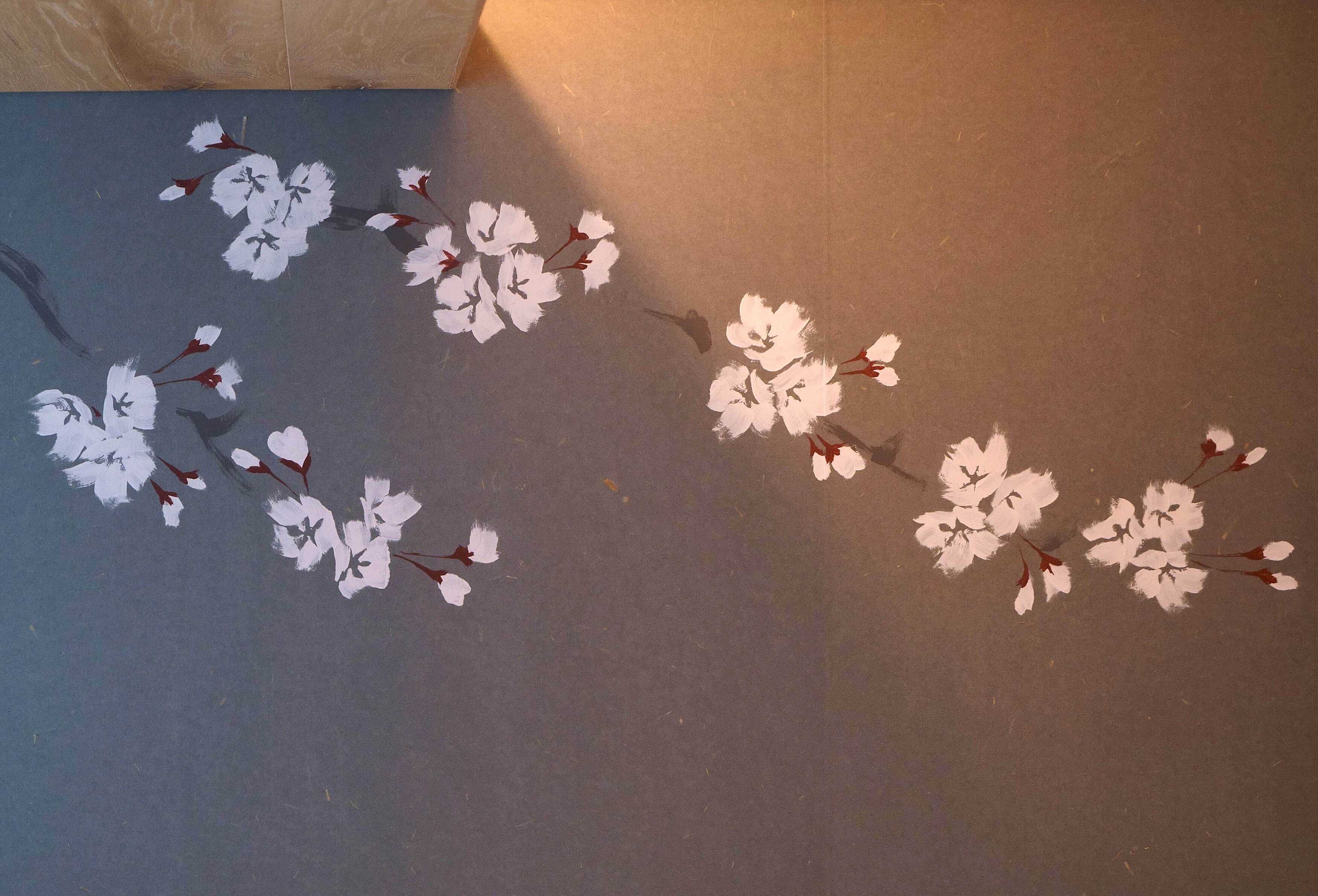
Cherry blossoms, maples, pine ... Flowers and trees that color the rooms of GOOD NATURE HOTEL KYOTO
Cherry, maple, pine. Flowers and trees are painted on the walls of each room of GOOD NATURE HOTEL KYOTO. Plants that have the elegance and elegance of Japanese painting will soften the hearts of those who spend time there. All these paintings were drawn by painter Yuki Sada, a painter living in Uji, Kyoto. Let me introduce the secret story of the production.
What is drawn are flowers and trees in Kyoto
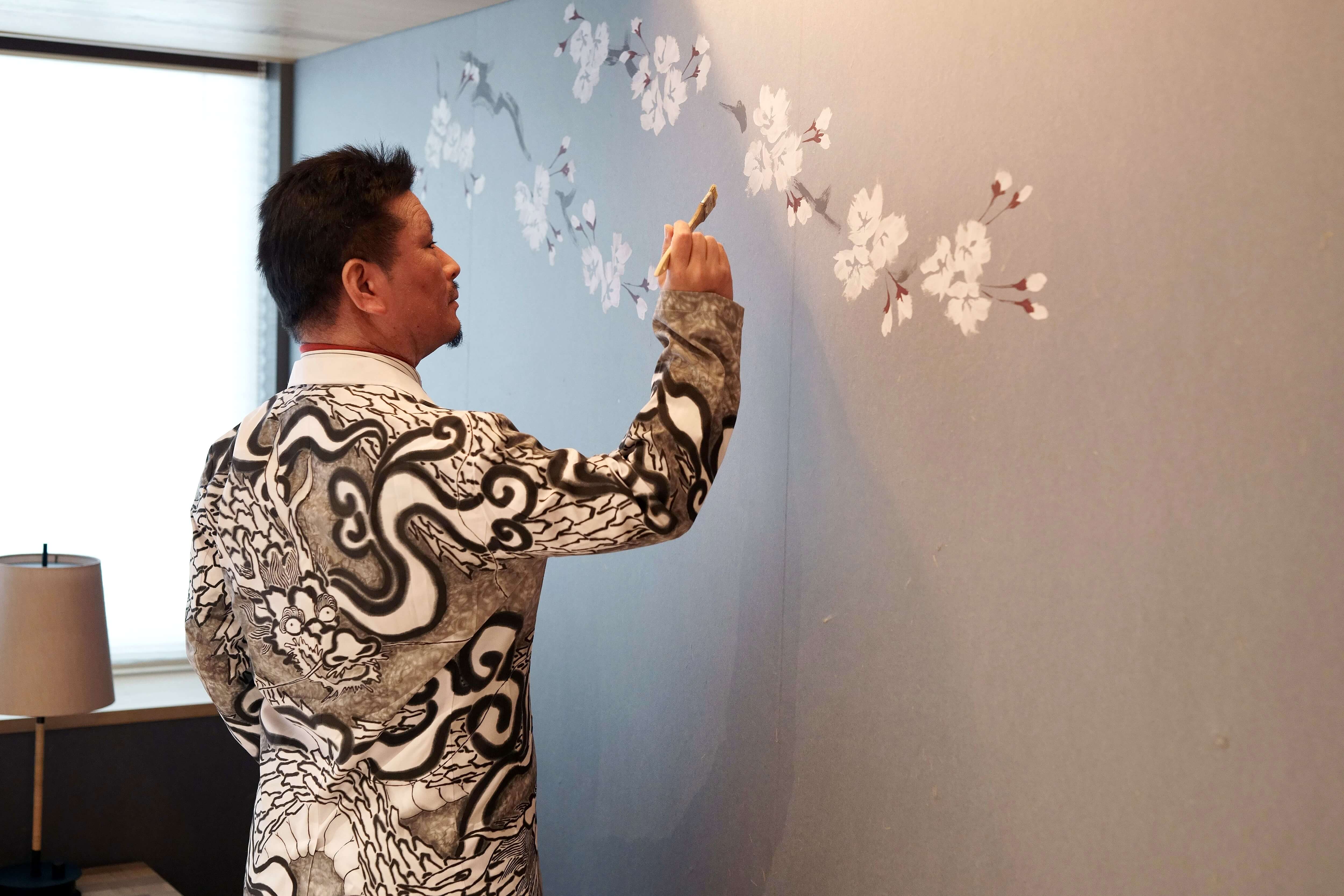
In the summer of 2019, less than half a year before opening, construction and preparations are progressing at a rapid pace, painter Yuki Fukui headed to the wall of the guest room of GOOD NATURE HOTEL KYOTO and continued painting silently.
Gorgeous and pretty cherry blossom petals and delicate but bright blue maple. In the suites, etc., there are pine drawings on the boards. The hand-painted, warm touch of flowers and trees will give guests a sense of comfort, while visitors from abroad will also be able to enjoy the uniqueness of Japan. The artist, Yuki Fukui, worked on the paintings for all 141 rooms. The message to the people who came to Kyoto is included in the picture.
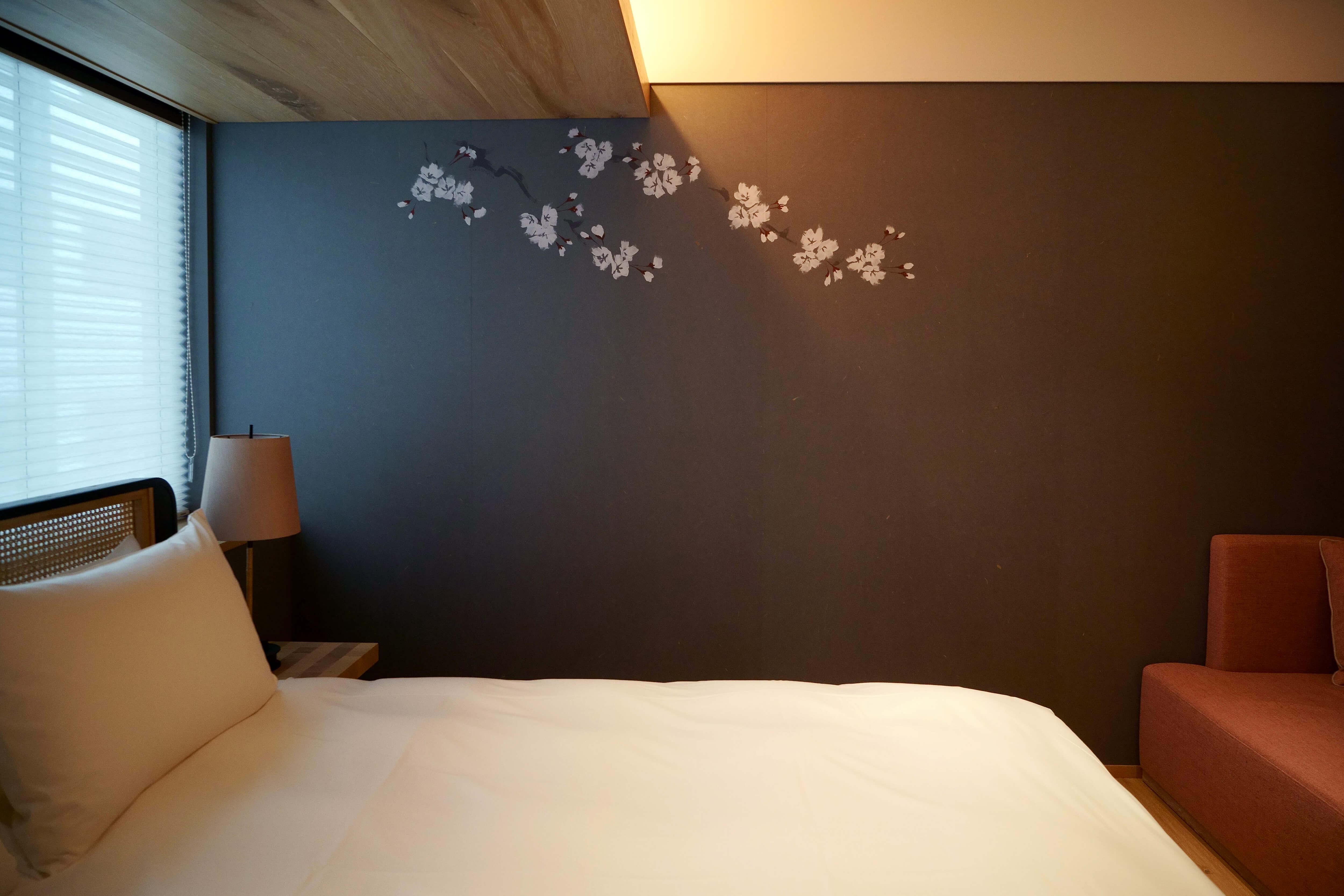
To paint this picture, Mr. Fukui carefully examined famous places in Kyoto. In each picture, the name of the place is actually added casually in the alphabet. Please look for it when you stay.
Make your own brush with a vibrant touch
GOOD NATURE HOTEL KYOTO has 141 guest rooms in total. Mr. Fukui drew pictures on the walls of all the rooms. The size and arrangement of beds and furniture vary from room to room, so what kind of device is used for each painting?
Fukui: "At the time I drew the picture, the room wasn't finished yet, and there were cases where it wasn't furnished and the floor wasn't attached, so read the image of the completed room from the drawing. , I drew while thinking about the place where the guest spends and how the light enters from the window. For example, this blue maple is drawn so that the branches approach when viewed from the bed (left side). That alone would shorten the line of sight to the picture, so I extended another branch to the opposite window side (right side) so that the line of sight would naturally go toward the window. "
Also, there is a sofa under the picture, and the point is that the figure is shaped like an eight so that you can enjoy the atmosphere under the maple when you sit there. In addition to the composition of the picture, there are also ideas for the tools used for drawing.
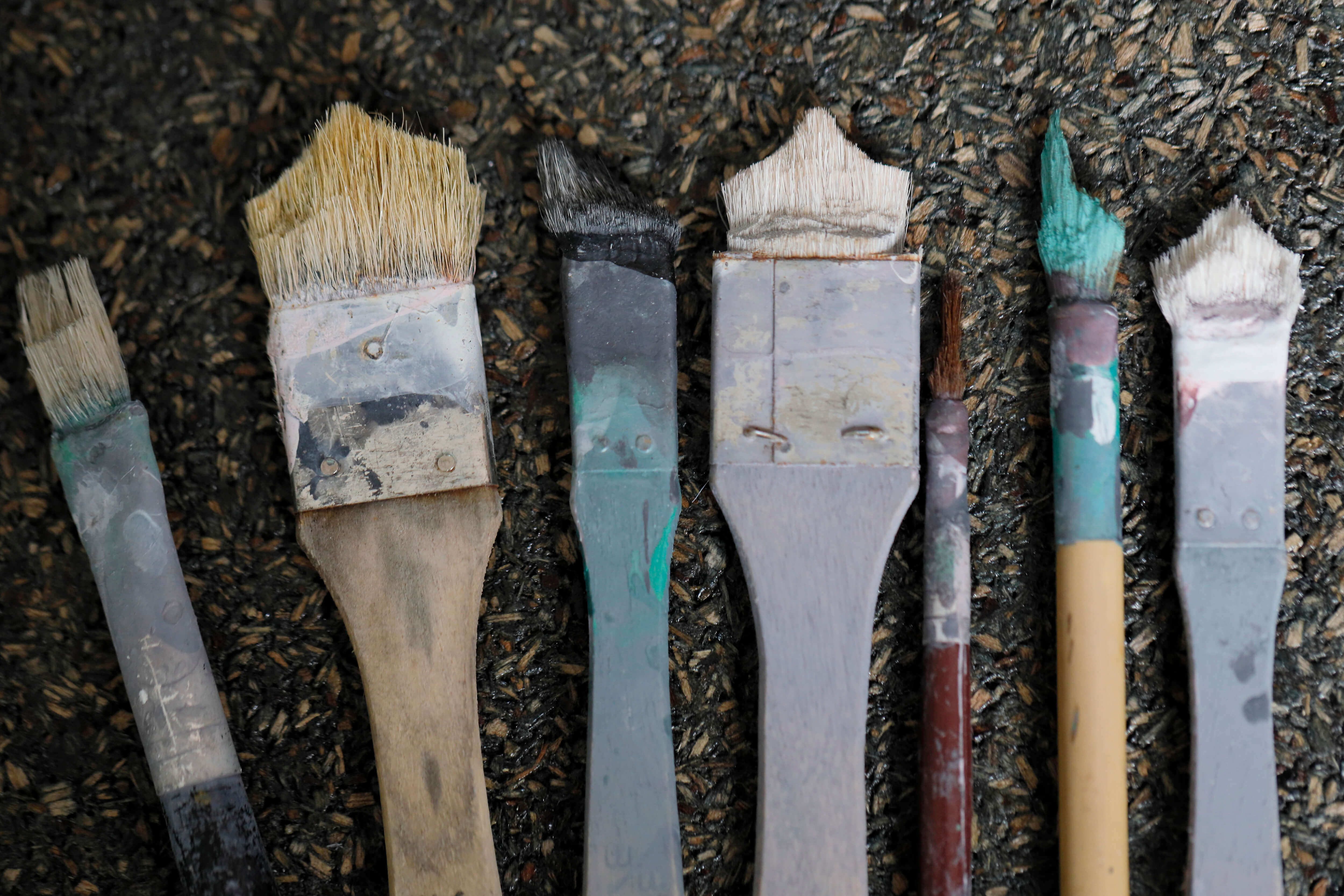

Looking at the brush that Mr. Fukui actually used, the tip was cut off. This was created to draw pictures in many rooms in a short period of time. The shape of the mountain is used to draw the cherry blossoms, and if you move the slanted part along the wall, it is said that the petals will be the right size.
Fukui: "In this case, you can draw one petal with one touch, and you can draw cherry blossoms with a total of five touches. It is not always good to spend time on pictures. It's a delicate line drawn with aya rather than a fine and weak impression.
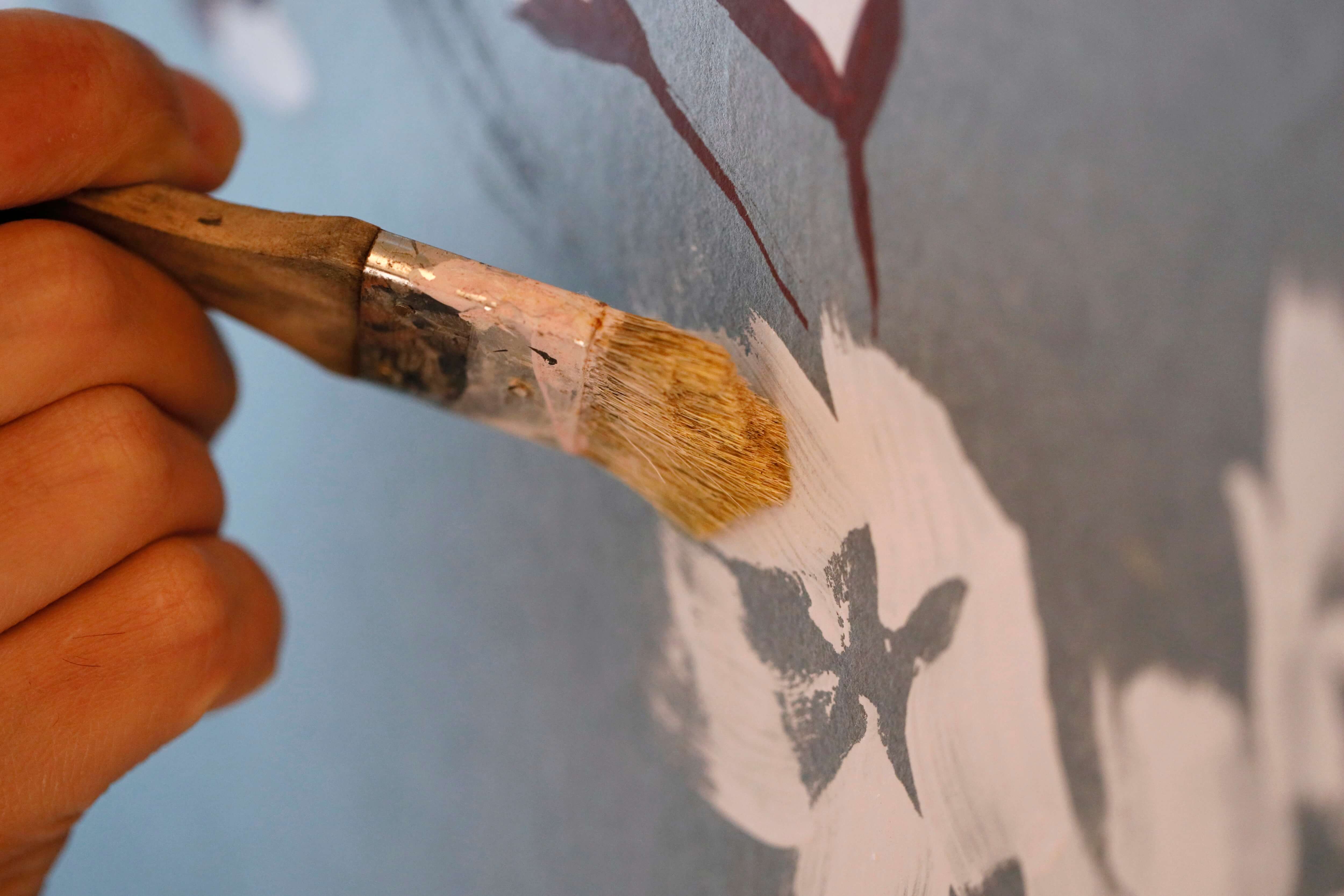
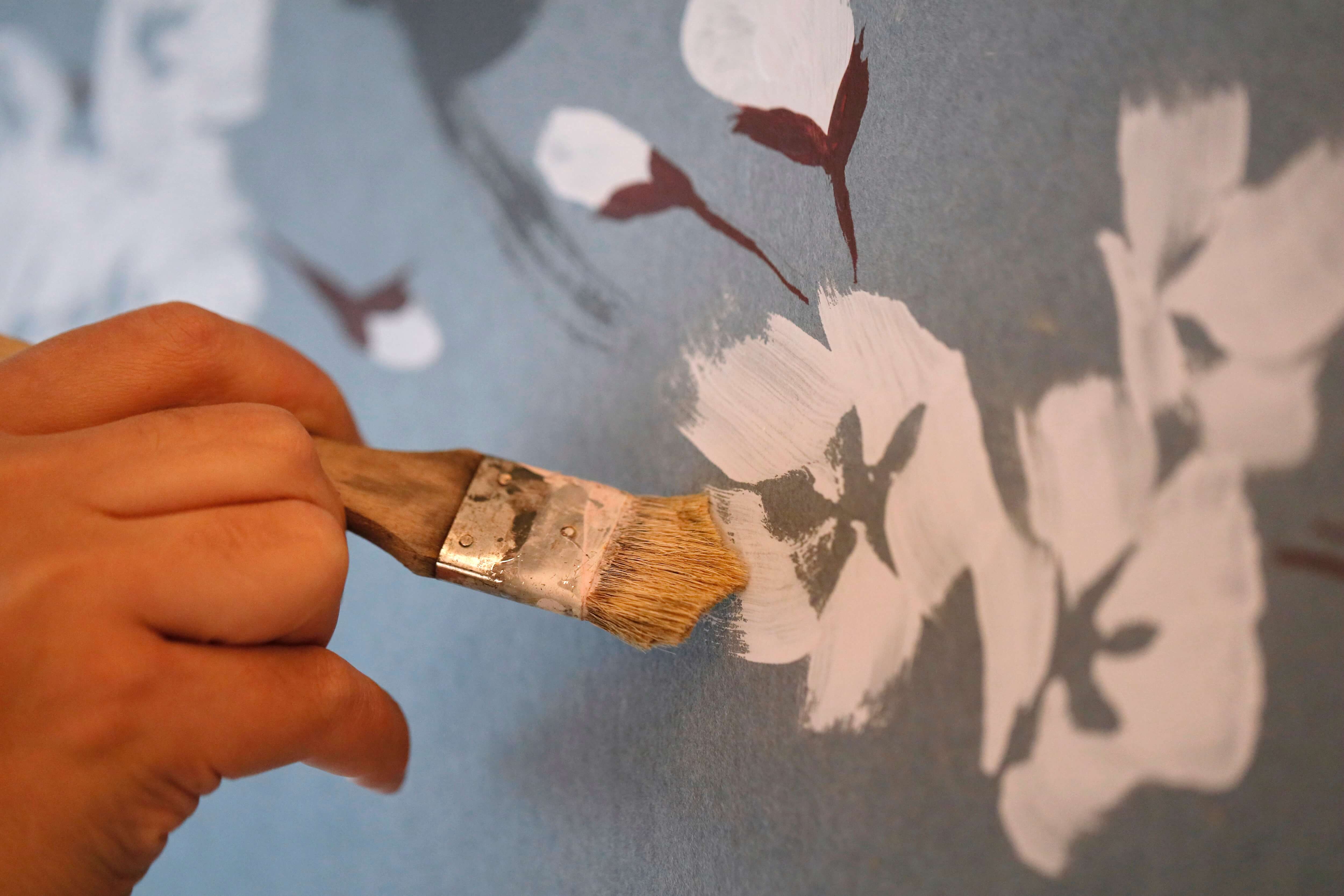
In addition, Mr. Fukui made various ingenuity, such as making his own thin and sharp brush to draw maple leaves. There must have been a lot of hard work and pressure in drawing alone, but the look back at the time of production seems to be just fun. Behind this is a unique career based on the belief that the more a painter, the better he paints.
A turning point visited during smooth sailing
Fukui, who was a student and chose a course to become an art teacher, aspired to be a designer, suddenly asked the question, "What was the first person to paint in human beings thinking?" I will hit it. While thinking, "If you understand that feeling, you can design and draw more freely," you come to the mural at Lascaux Cave, one of the earliest paintings of mankind. Inspired by the paintings made of earth and stone, I started to draw with my own paint from natural earth and stone when I was about 20 years old. When I was in my third year at university, I was selected for one of Japan's big public art exhibitions, Nitten. He says that he became confident and became absorbed in drawing with earth and stone.
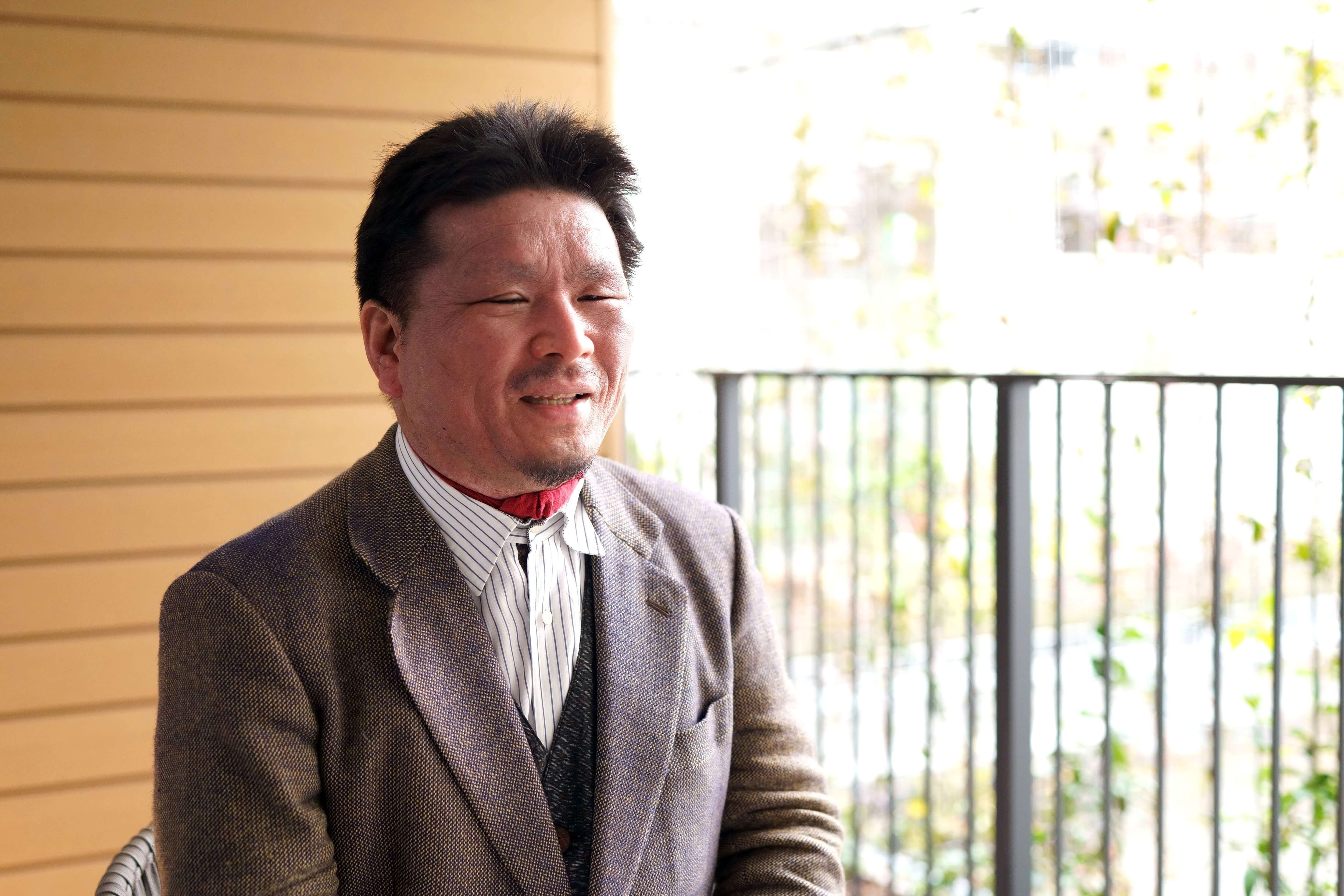
After graduating from university, he worked in a design work for a building material manufacturer, and retired at the age of 30, "decided to be a retirement age," and concentrated on writing. Various requests were made, such as painting production and painting at the entrance of an apartment. At the age of 40, he has held more than 50 solo exhibitions, and has held 120 solo exhibitions so far. And at the age of 43, she has the opportunity to draw pine trees on the Noh stage of Takasago Shrine in Takasago City, Hyogo Prefecture. "Along with the dragon on the ceiling of the temple, the pine on the Noh stage is a big job that painters and painters can't even hope for." .
Fukui: "I used to feel like I was working alone, but when I was about 40, when I tried to make new friends for painters and painters, there were no full-time professionals. I was surprised because I thought that I lived 24 hours a day with paintings, and what was the point was not a problem with the work or the approach, but with the customer who asked me for the painting. I realized that I was building relationships and relationships. "
So Fukui started the “Bran Picture Project”. They accept orders from people who want to paint on sliding doors and walls of their homes and stores, visit the site, and draw up their favorite pictures while consulting with the client. Initially it was a project for Fukui himself, but now I am working with two fellow painters.
Fukui: "For example, if the customer order is a tiger, the person who is good at drawing tigers, if it is a flower, the person who is good at flowers goes to draw. The more they draw, the better they will be, and the more they can build a relationship with their customers, the more they will be able to live as painters. "
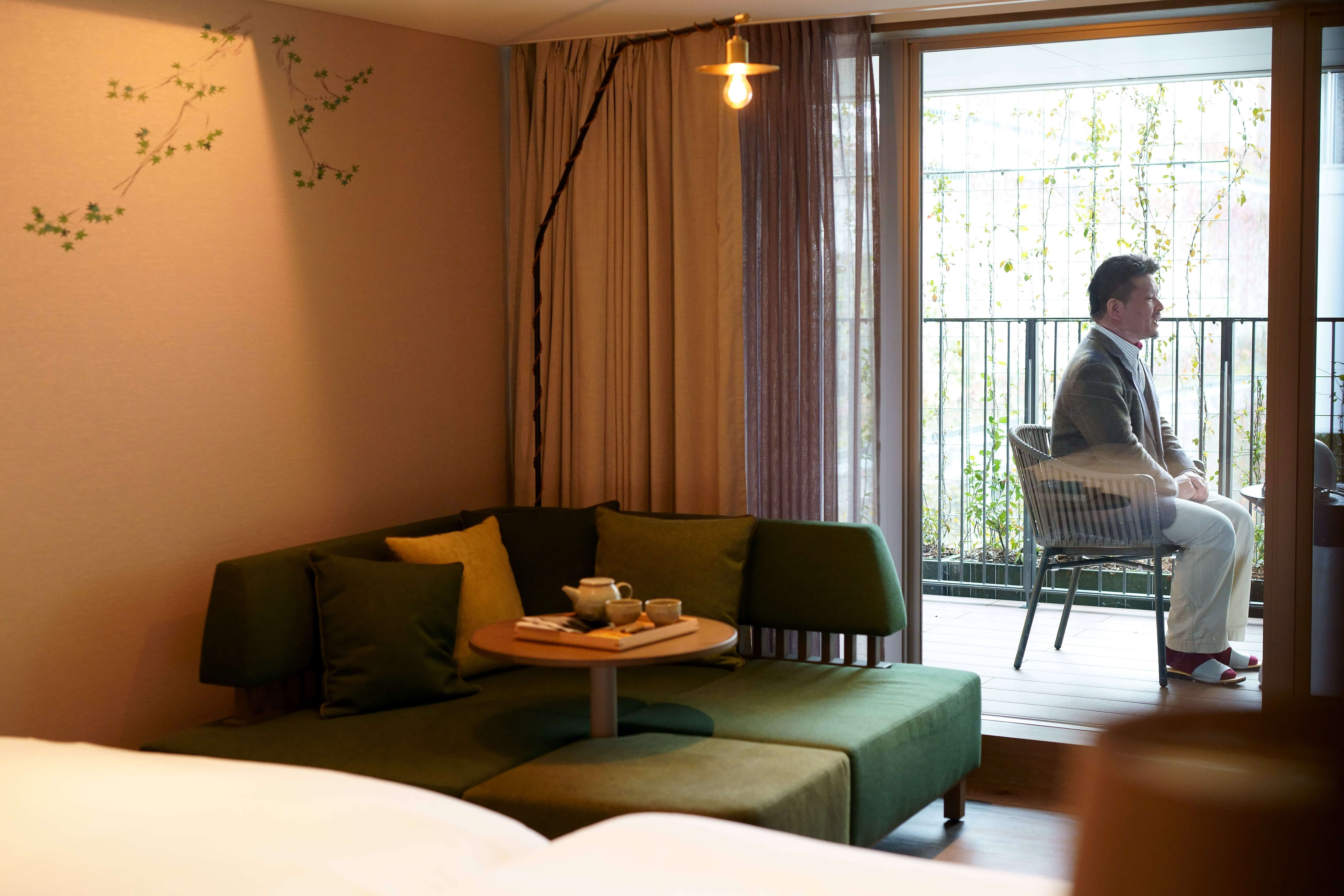
He said that his experience with the "Bran-e Project" was also helpful at GOOD NATURE HOTEL KYOTO.
Fukui: “The other day, I was drawing a bran picture of a private house in Matsusaka, Mie Prefecture, but the interesting thing is that the customer does not suddenly see the completed picture. The customer inflates the image while watching it and says, “I want you to do more.” Then, on the spot, I immediately decide to change the part of the picture, but still have to draw it on time. It will be fun with the feeling of being full of face. ''
GOOD NATURE HOTEL, he responded to the voices of designers and hotel staff during the prototype stage, changing the types of plants and the size of the flowers. It seems to be very difficult, but rather the communication and restrictions with the client seem to improve the picture itself.
Draw with colors made of soil, stone, and nature
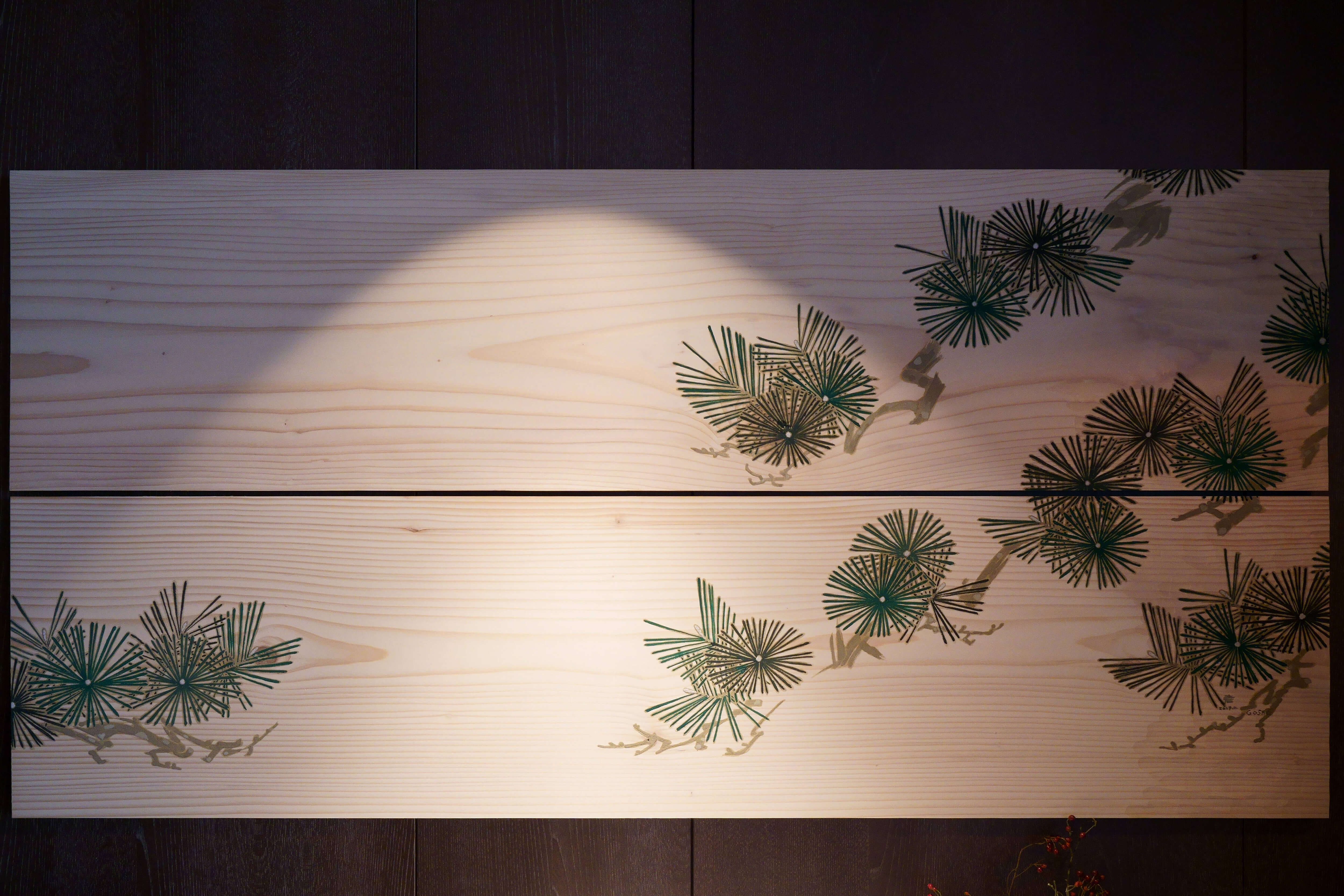
Some rooms, including suites, are decorated with board drawings that use the nature of Fukui's origin. The peculiar gray color used in the pine branches is made by mixing sand with powder from the sand that has been picked up downstream of Togetsukyo Bridge in Arashiyama. The technique of producing color from soil and stone is the traditional method of producing pigments in Japan. Mr. Fukui talks about the fun of drawing with it.
Fukui: “At first, I thought that if I found the soil or stone, I could control the color. However, even the same stone turned red or yellow, and it turned out to be a whim. I don't have the initiative in the color of myself. If I give up manipulating the color, I have to rely on nature and draw not only on the color but also on the land where the soil, stone and sand were I began to take care of stories that are not colors, the reasons and scenes I went to, "
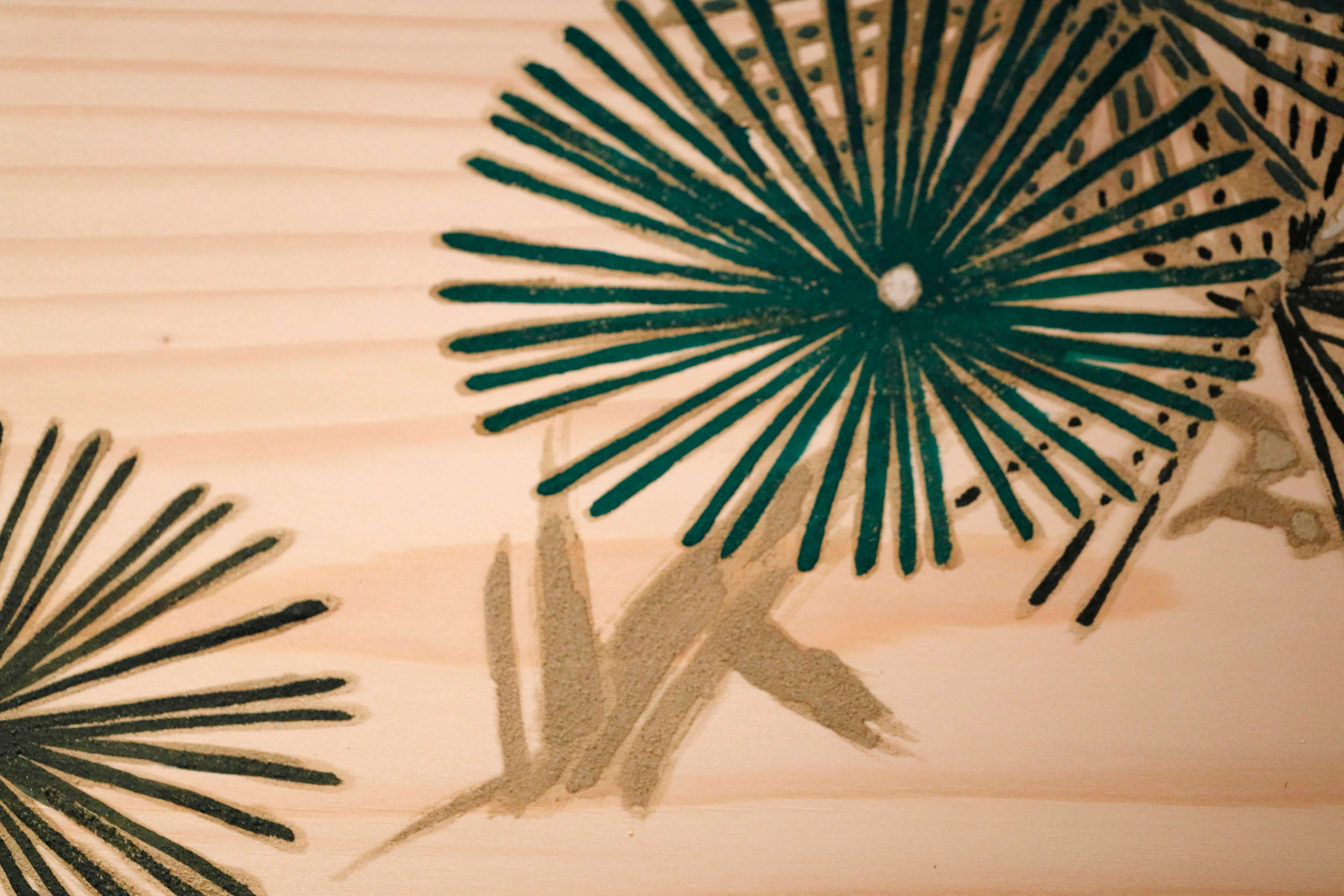
It is said that this form of expression is linked to Mr. Fukui's interpretation of “GOOD NATURE”.
Fukui: “When I first heard about the concept of“ GOOD NATURE ”I felt that the key point was how nature and humans relate to each other. We believe that the hospitality with a sense of nature will convey the comfort of nature and the warmth of materials. I hope my paintings will also be part of that bridge between nature and people. ''
Paintings depicting colors and flowers and trees born from the nature of Kyoto. If those things make your stay in Kyoto more memorable, there's nothing more exciting about it.
Yuki Fukui
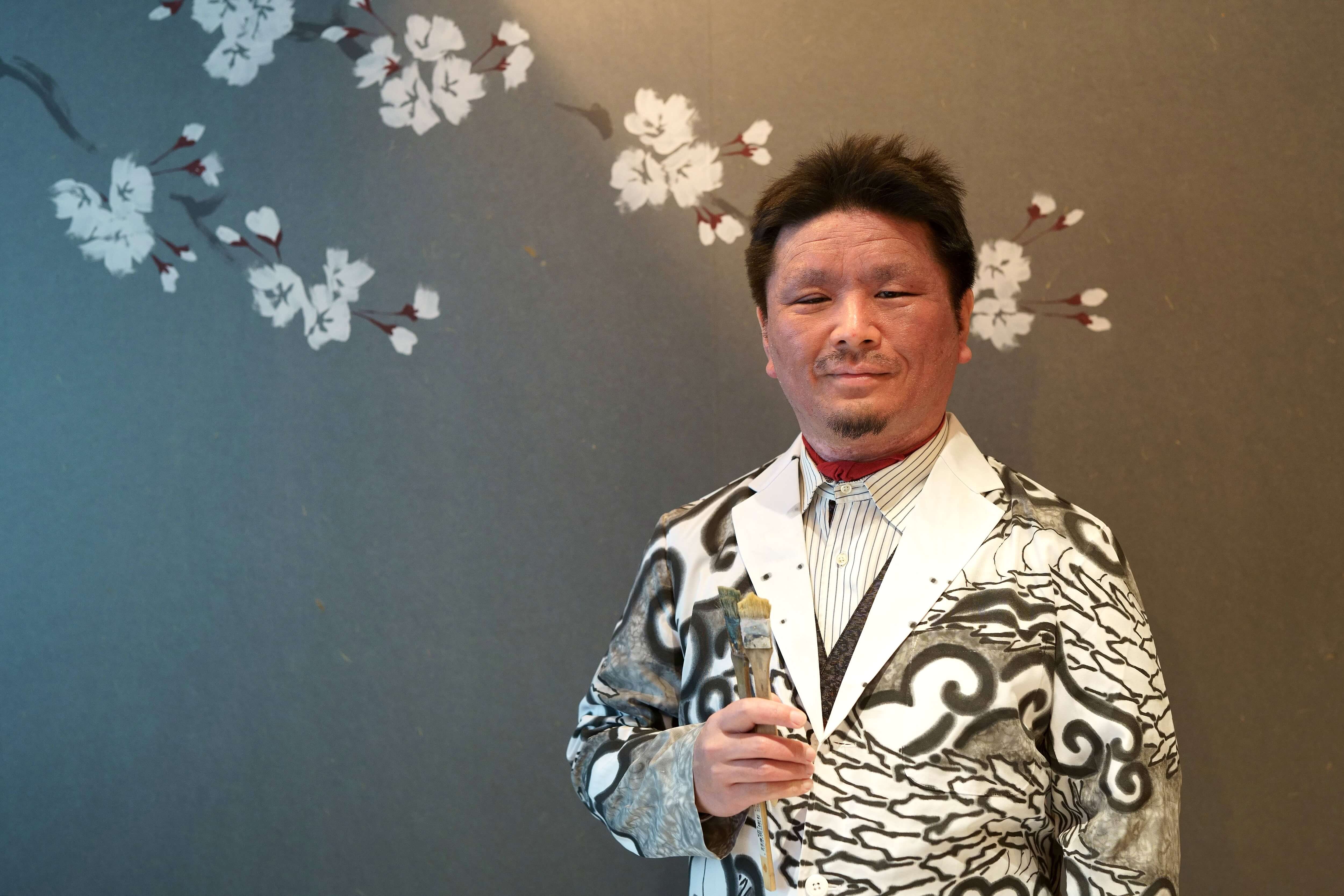
Born in Kyoto in 1970. Kyoto start drawing in the paint using soil and stone to education college student. Selected for Nitten in 1991 (Japanese painting). After graduating from university, became a full-time writer through a general company. He made various requests, and in 2013 produced a pine for the Noh stage mirror at Takasago Shrine. He has held 120 solo exhibitions so far. In addition, like a painter of the Edo era who drew a picture to thank one inn for one night, he has been energetically expanding the range of activities, such as performing the “Fusuma picture project” drawing on sliding doors and walls of houses and stores.
http://tuchitoisi.web.fc2.com/
Bran picture project HP
https://fusumae.gallery-kitano.com/


